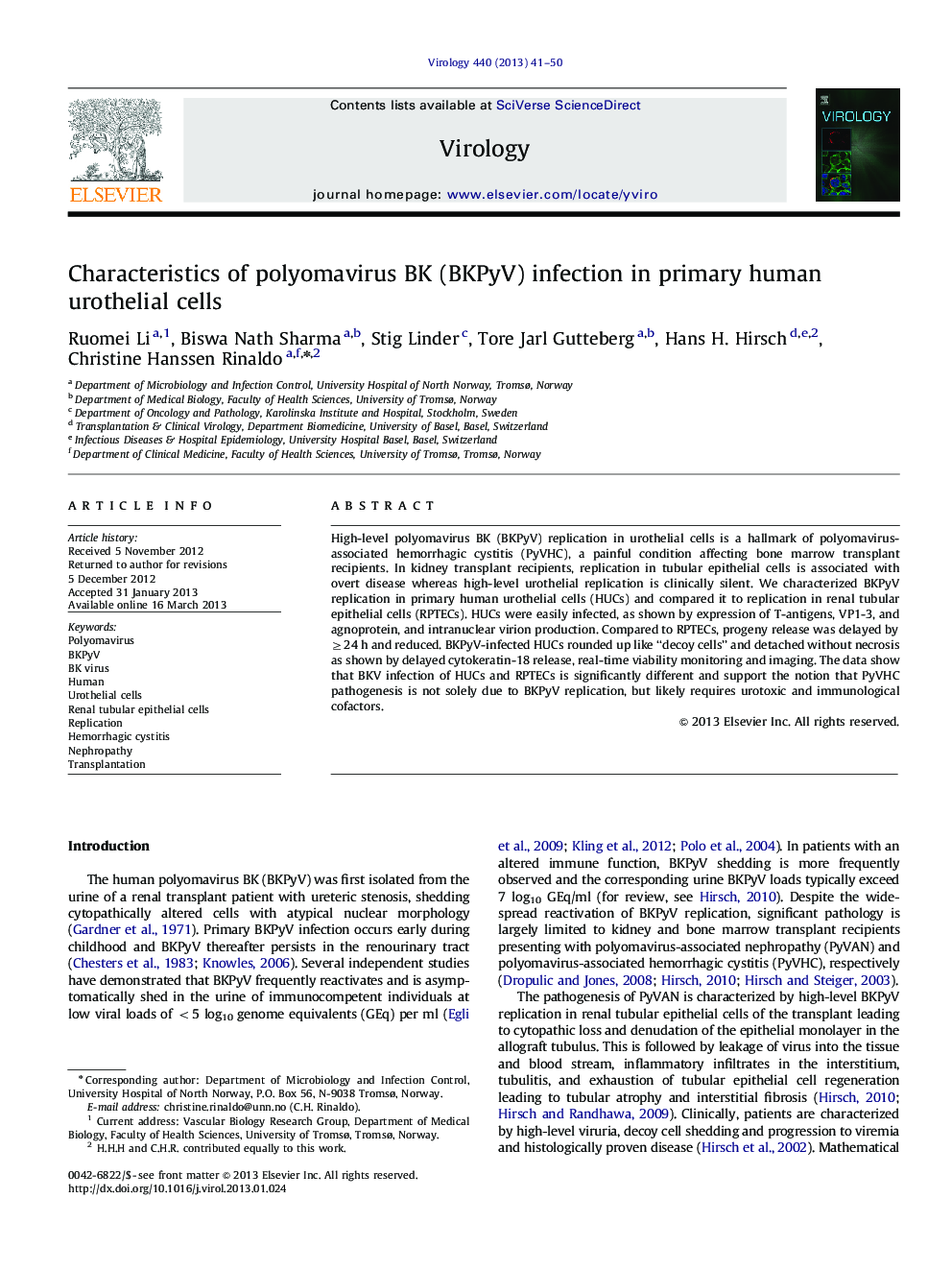| Article ID | Journal | Published Year | Pages | File Type |
|---|---|---|---|---|
| 3424115 | Virology | 2013 | 10 Pages |
High-level polyomavirus BK (BKPyV) replication in urothelial cells is a hallmark of polyomavirus-associated hemorrhagic cystitis (PyVHC), a painful condition affecting bone marrow transplant recipients. In kidney transplant recipients, replication in tubular epithelial cells is associated with overt disease whereas high-level urothelial replication is clinically silent. We characterized BKPyV replication in primary human urothelial cells (HUCs) and compared it to replication in renal tubular epithelial cells (RPTECs). HUCs were easily infected, as shown by expression of T-antigens, VP1-3, and agnoprotein, and intranuclear virion production. Compared to RPTECs, progeny release was delayed by ≥24 h and reduced. BKPyV-infected HUCs rounded up like “decoy cells” and detached without necrosis as shown by delayed cytokeratin-18 release, real-time viability monitoring and imaging. The data show that BKV infection of HUCs and RPTECs is significantly different and support the notion that PyVHC pathogenesis is not solely due to BKPyV replication, but likely requires urotoxic and immunological cofactors.
► Primary human urothelial cells (HUCs) are very permissive to polyomavirus BK(BKPyV). ► Compared to renal tubular epithelial cells, HUC viral progeny release is delayed. ► Infected HUCs round up and detach like “decoy cells” without signs of necrosis. ► This explains the asymptomatic high-level urothelial replication in BKPyV nephropathy. ► Conversely the pathogenesis of hemorrhagic cystitis must require additional factors.
